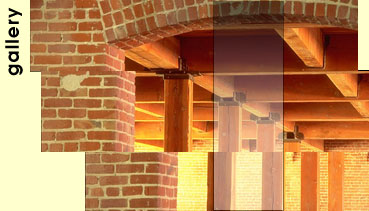




This beautiful but abandoned brick-and-timber building, designed in 1916 by George Applegarth, had originally been used as a printing house. Demonstrating the confidence and foresight that became our trademark, McKenzie, Rose & Holliday Development bought it in 1990, just 30 days after closing on our first loft-conversion property on 4th Street and despite a generally poor market for condominiums. We preserved the integrity of the original design while creating a flexible living space that combined the comforts of condominiums with the industrial style of lofts. Buyers responded enthusiastically: All the lofts sold and closed within 90 days of construction completion.
Completed: 1992
Project value: $15.5 million
Number of units: 44
Site area: 24,160 square feet
Project area: 85,000 square feet
Average unit size: 1,750 square feet
Average unit price (1992): $330,000
Average unit price (2003): $800,000
Density per acre: 79 units/acre
Parking : 44 spaces
The timing couldn’t have been more opportune. Aware of the advantages of the 1988 live-work ordinance, McKenzie, Rose & Holliday Development was shopping for properties in San Francisco’s South of Market (SOMA) district to turn into live/work lofts well before San Francisco’s loft craze began. At the same time, Mitsui Fudosan of Japan was also investigating the San Francisco real estate market. After a year’s worth of due diligence, Mitsui Fudosan offered us a significant line of credit to acquire buildings and construct live/work lofts. That’s when the owners of the Clocktower, the preeminent SOMA building that was the former home of Schmidt Lithographic, contacted McKenzie, Rose & Holliday Development about selling the property. The property represented challenges as well as opportunity. To mitigate the noise from the nearby San Francisco-Oakland Bay Bridge, we created a corridor along the facing wall and oriented most of the units toward the interior courtyards. Preserving the building’s architectural integrity meant creating 44 distinct floor plans and 67 kitchen styles. The 127 units range in size from 500-square-foot studios—San Francisco’s first mini-lofts—to a 3,000-square-foot penthouse. All feature the exposed bricks, concrete columns, and 15-foot ceilings that would become a McKenzie, Rose & Holliday Development signature.
McKenzie, Rose & Holliday Development’s vision and experience led to the rehabilitation of a landmark San Francisco building and the creation of a vital new hub in an urban neighborhood undergoing a renaissance.
| Golden Nugget Merit Award | Pacific Coast Builders | 1992 |